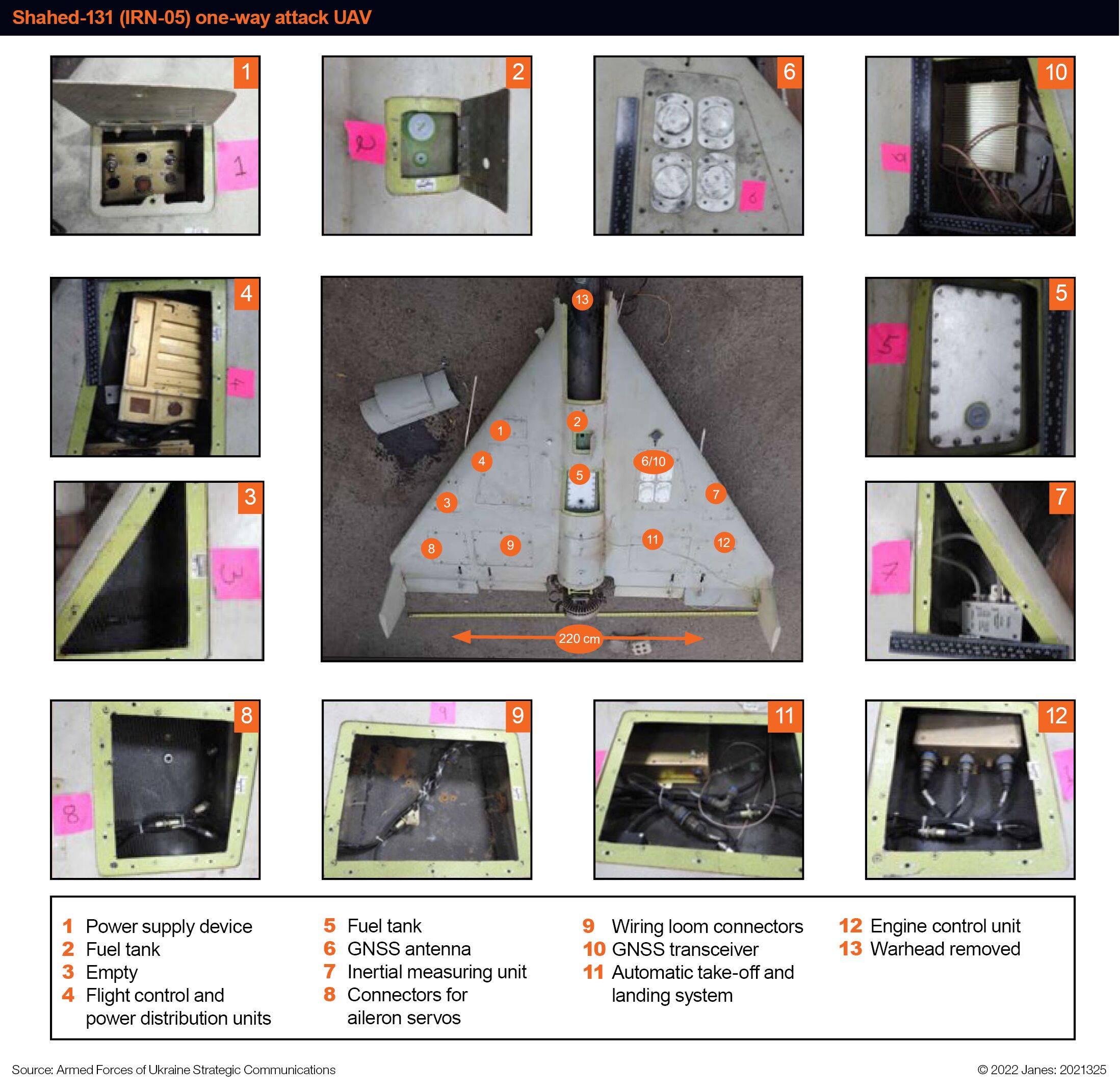
A composite of photographs from the report shows the locations of the Shahed-131's components. (Janes)
The Armed Forces of Ukraine's Strategic Communications service has released a technical report on an Iranian Shahed-131 one-way attack unmanned aerial vehicle (UAV) that explains how it was upgraded to resist jamming.
While mostly written in Cyrillic, the report appeared to be a translation of a US document as it makes extensive use of English abbreviations, including ‘MEPED', a probable reference to the US Military Equipment and Parametrics Engineering Database.
It used the ‘IRN-05' designation for the Shahed-131 that the US military has applied to an Iranian UAV type that comes in two sizes, with the smaller type used to attack Saudi Arabia's east-west oil pipeline in May 2019, and the larger one to attack a tanker in the Arabian Sea in July 2021.
The primary visual difference between the two is that the vertical stabilisers extend both up and down from the ends of the wings of the larger version, which has been identified as the Shahed-136, but only upwards on the smaller Shahed-131.
Photographs have shown the remnants of Shahed-136s that Russian forces have used in Ukraine in recent weeks. However, there has been no confirmation that Iran has also transferred Shahed-131s, so the report was presumably based on one recovered in the Middle East.
It noted that the Shahed-131 had four white puck antennas for receiving global navigation satellite services (GNSS) signals, while other black pucks had been disabled. It said this indicated that the UAV had been upgraded “from a standard black GNSS system to a system that can now operate in GNSS-prohibited airspace”.
Looking to read the full article?
Gain unlimited access to Janes news and more...







